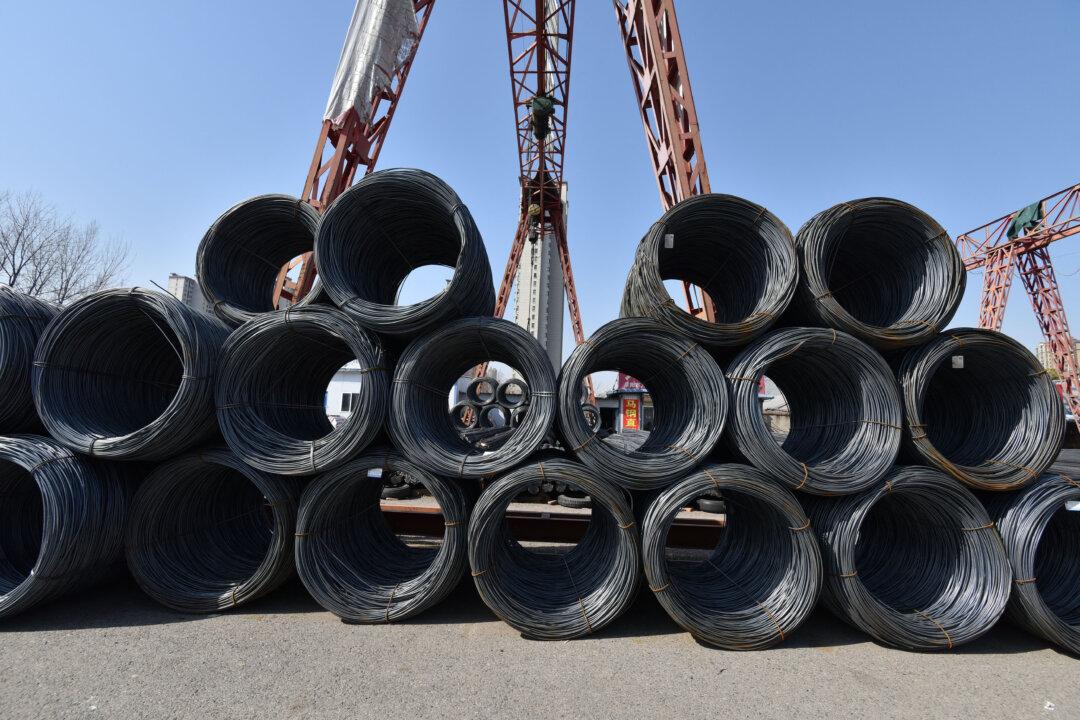On Jan.15, 2020, then-President Donald Trump announced a historic trade deal with Beijing that had two deadlines for increased imports, summing to $200 billion, from China.
That’s because China’s equivalent of crack cocaine for consumers feels so good—until it kills us. We love buying cheap stuff on Amazon. Corporations love the profits. Politicians do exactly what their voters and campaign contributors want. Everybody shoots up with the illusion that what feels good today, will be good for tomorrow.
Not so much, when China uses its profits to build a military and political influence machine capable of defeating America, democracy, and the market-based system on a global scale.
How Trump Used Tariffs to Get the $200 Billion Promise From China
Trump used the tariffs, and a credible threat for more, to extract a $200 billion promise from Beijing in January 2020. In exchange, he decreased some of the tariffs. The rest remain in place, even under Biden.Beijing never would have agreed to this except under Trump’s tariff thumb screw.
How China Broke Its $200 Billion Promise
The deal gave Trump a public win leading into the elections of 2020, but China immediately started reneging on it, ultimately using the pandemic, the resulting global recession, lower commodity prices, disrupted supply chains, and the U.S. government’s “continuous sanctions and suppression towards Chinese entities” as excuses.
Just five months into the deal, when Trump was still president, China had only imported 47 percent of what it should have to meet the 2020 year-end target, according to Chad Bown at the Peterson Institute for International Economics.
A mid-2020 survey of 100 companies doing business in China found that 13 percent had been asked to transfer technology compared to just 5 percent in 2019. The Trump deal was not going well, according to Bown. But Trump couldn’t emphasize it publicly, as he was knee-deep in an election.
While Beijing promised $227.9 billion of total imports by the end of 2020, it actually imported just $134.4 billion that year, well under the 2017 baseline of $151.2 billion. The promise of $274.5 billion of imports by the end of 2021 resulted in just $154.4 billion, barely above the static baseline, and well below what the imports would have been without the tariffs, according to Bown.
Note that both of the deals’ deadlines expired after Biden was elected president. It was for his administration, not just Trump or his trade representative, Robert Lighthizer, to project the credibility of consequences, and then impose them, for Beijing not sticking to its promises.
And according to Jamieson Greer, former chief of staff to Ambassador Lighthizer, “Bown’s claim that the US exported none of the extra $200B is primarily dependent on the numbers for services trade, which is dominated by travel, which obviously stopped during the entire pandemic.”
Greer continued: “A focus on actual goods trade is much more instructive, and shows that we had record good exports to China in 20/21 despite not fully meeting purchase targets. The point is even though China didn’t meet the deal, it still resulted in record exports.”
What lesson should we have learned long before Trump ever came on the scene? Don’t trust the Chinese Communist Party. It thrives on making and breaking agreements.
But the lesson the corporations and their economists want us to believe is different: end the tariffs. They want us to return to the feel-good days of crack cocaine and unmitigated free trade with the world’s biggest enemy of democracy.
Don’t buy into the temptation. We need to strengthen, enforce, and broaden our China tariffs, including by encouraging similar China tariffs by our allies in Europe and Japan, for example, if we want Beijing to become not only more economically open, but more democratic.
Only if China fully reforms and liberalizes will it cease to be a threat to democracies and markets worldwide. It will not do so, without the leverage of tariffs.





